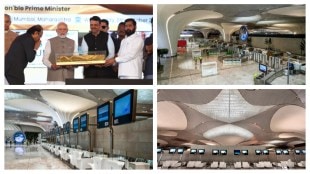-
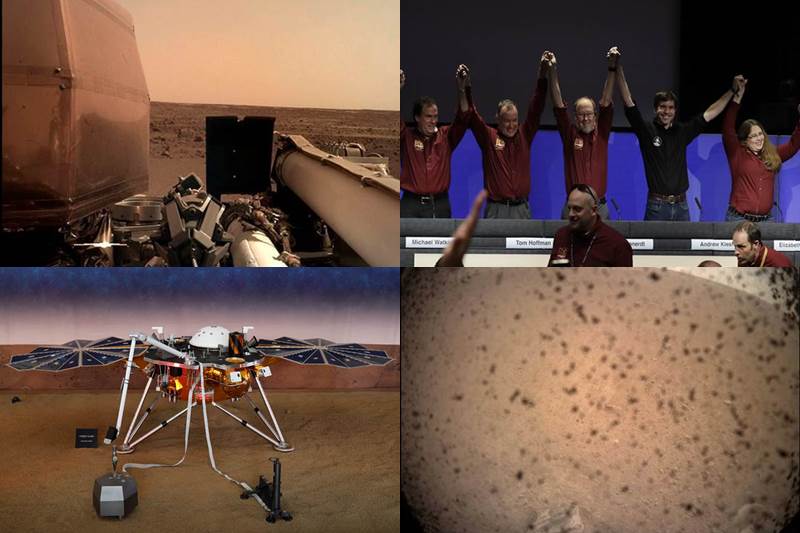
On November 26, NASA's InSight spacecraft made its 8th successful landing on the surface of Mars. The InSight is NASA's first robotic lander that has been designed to study the deep interior of a distant world. The robotic lander touched down on Mars along with instruments that are meant to detect planetary seismic rumblings never measured anywhere but Earth.
-
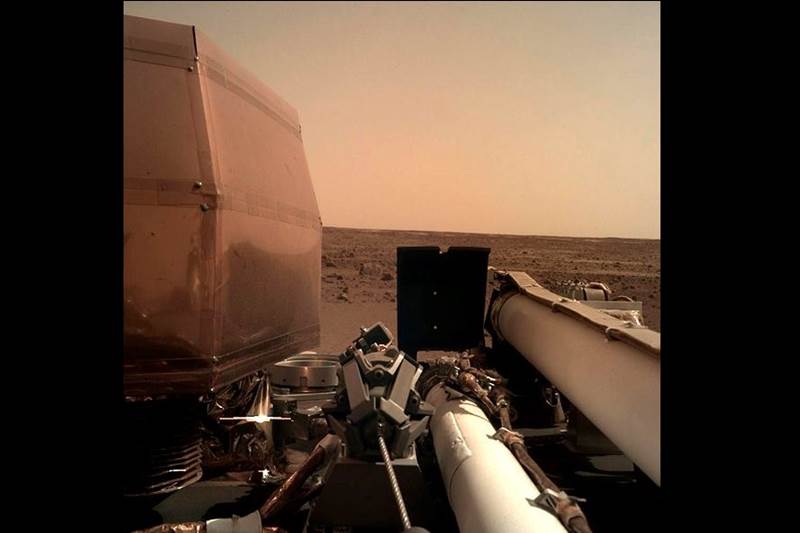
The spacecraft was launched from California in May on its nearly $1-billion mission. It will spend the next 24 months – about one Martian year – collecting a wealth of data to unlock mysteries about how Mars formed and, by extension, the origins of the Earth and other rocky planets of the inner solar system. This photo provided by NASA shows an image on Mars that its spacecraft called InSight acquired using its robotic arm-mounted, Instrument Deployment Camera (IDC) after it landed on the planet on Monday, Nov. 26, 2018. The NASA spacecraft designed to drill down into Mars' interior landed on the planet Monday after a perilous, supersonic plunge through its red skies, setting off jubilation among scientists who had waited in white-knuckle suspense for confirmation to arrive across 100 million miles of space. (Photo: AP)
-
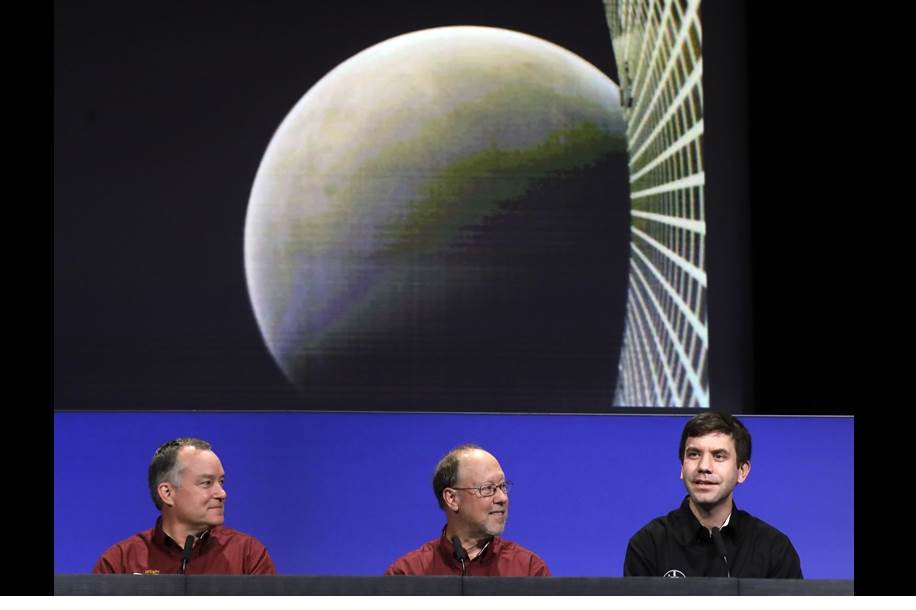
InSight's descent and landing, consisting of about 1,000 individual steps that had to be flawlessly executed to achieve success, capped a six-month journey of 301 million miles (548 million km) from Earth. [NASA official Andrew Klesh, right, speaks next to his colleagues, project manager Tom Hoffman, left, and lead scientist Bruce Banerdt, under a photograph sent from space by the InSight lander at NASA's Jet Propulsion (Photo: AP)
-
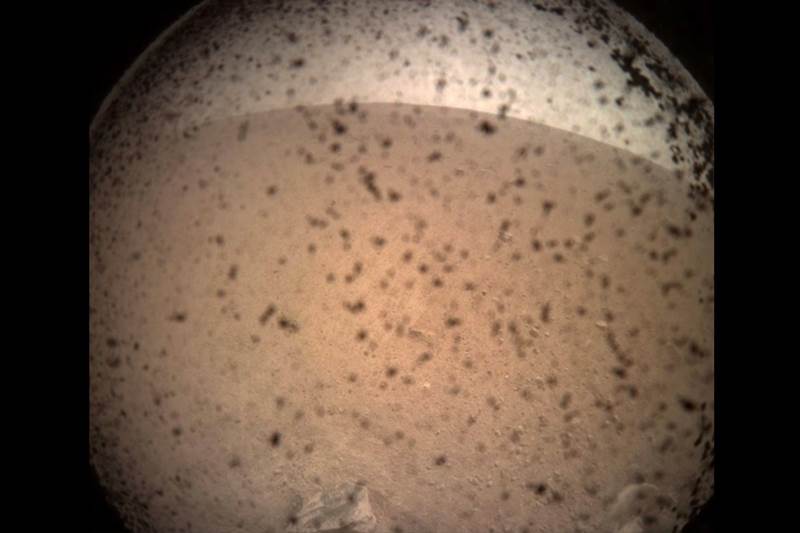
NASA's InSight Mars Lander acquired this image of the area in front of the lander using its lander-mounted, Instrument Context Camera (ICC) with the ICC image field of view of 124 x 124 degrees, on Mars, November 26, 2018. (Photo: Reuters)
-
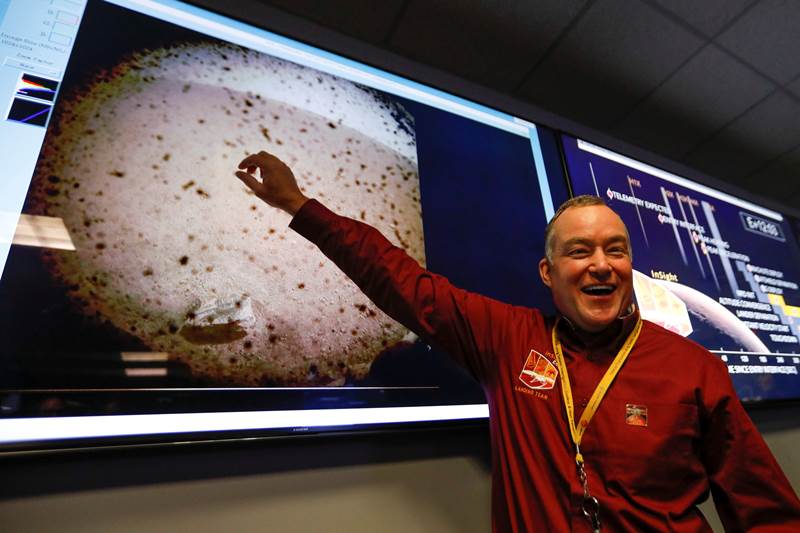
Project manager Tom Hoffman points to the first picture sent back to earth from Mars by the spaceship InSight at NASA's Jet Propulsion Laboratory (JPL) in Pasadena, California. (Photo: Reuters)
-
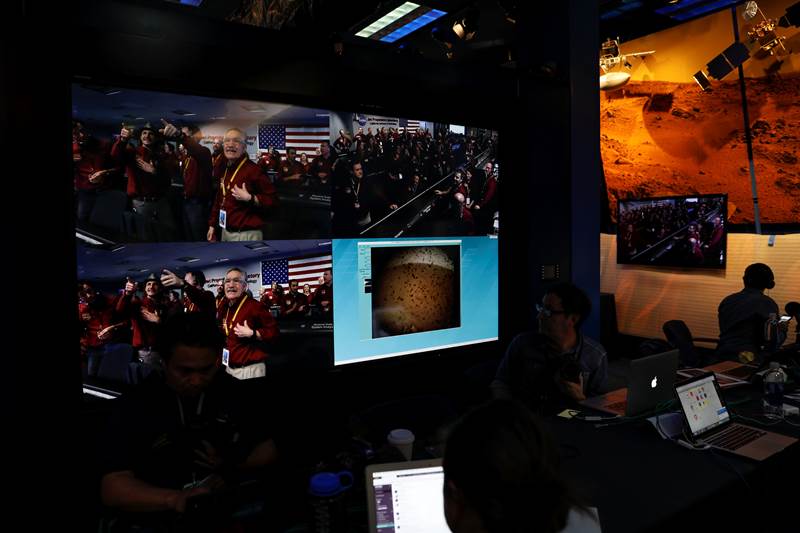
InSight was the eighth spacecraft to have landed successfully on Mars, all of them operated by NASA. [ The mission control team at NASA's Jet Propulsion Laboratory (JPL) react on a video screen as the spaceship Insight, NASA's first robotic lander dedicated to studying the deep interior of Mars, sends its first picture back to JPL. (Photo: Reuters)]
-
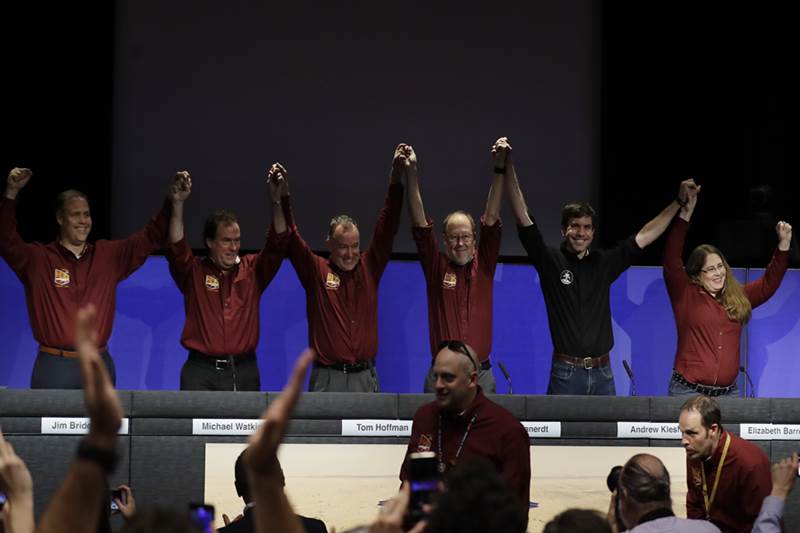
The three-legged lander streaked into the thin Martian atmosphere at 12,300 miles (19,795 km) per hour and plunged 77 miles to the surface within seven minutes, slowed to a gentle touchdown by atmospheric friction, a giant parachute and retro rockets. [ From left, NASA officials Jim Bridenstine, Michael Watkins, Tom Hoffman, Bruce Banerdt, Andrew Klesh and Elizabeth Barrett celebrate the Mars landing of InSight during a press conference at NASA's Jet Propulsion Laboratory. (Photo: AP)]
-

The stationary probe was programmed to pause for 16 minutes for the dust to settle, literally, around its landing site, before two disc-shaped solar panels were to be unfurled like wings to provide power to the spacecraft. [ NASA engineers in the space flight operation facility at NASA's Jet Propulsion Laboratory (JPL) watch the first picture arrives from the spaceship Insight after it landed on Mars.(Photo: Reuters)]
-
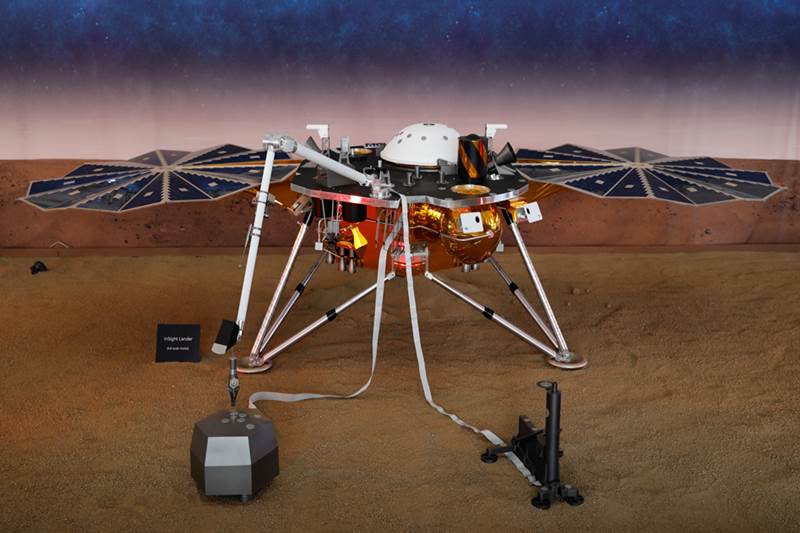
InSight and the next Mars rover mission, scheduled for 2020, are both seen as precursors for eventual human exploration of Mars, an objective that NASA Administrator Jim Bridenstine said on Monday might be achieved as early as the mid-2030s. [ A life-size model of the spaceship Insight, NASA's first robotic lander dedicated to studying the deep interior of Mars, is shown at Jet Propulsion Laboratory (JPL) in Pasadena, California, U.S. November 26, 2018. (Photo: Reuters)]
-
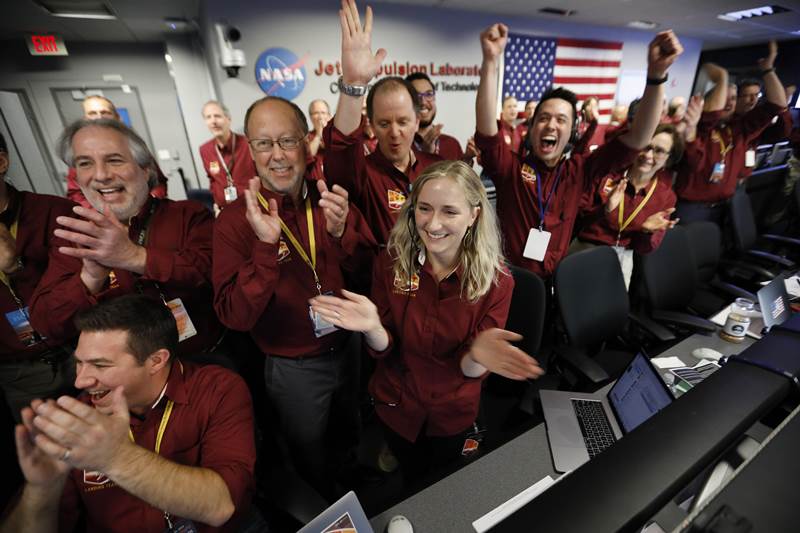
The landing data and initial photograph were relayed to Earth from two briefcase-sized satellites that were launched along with InSight and were flying past Mars as it reached its destination. [ Engineers celebrate as the InSight lander touchdowns on Mars in the mission support area of the space flight operation facility. (Photo: AP)]
-

NASA officials say it will take two to three months for the main instruments to be deployed and put into operation. [ People react as they watch on a video screen the spaceship InSight, NASA's first robotic lander dedicated to studying the deep interior of Mars, land on the planet's surface after a six-month journey, in Times Square in New York City. (Photo: Reuters)]

Nobel Peace Prize 2025 Live Updates: Trump reacts after Nobel Peace Prize snub, says winner, Maria Corina Machado, accepted award ‘in his honour’





